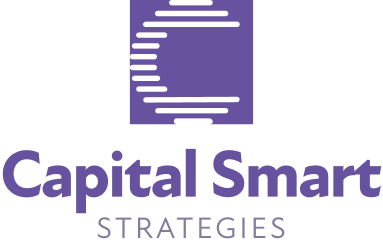
The first quarter of 2024 witnessed a surge in initial public offerings (IPOs) and mergers and acquisitions (M&A) within the biotech industry, signaling continued interest from investors.
AstraZeneca’s acquisition of start-up Amolyt on March 14, and its longtime biotech partner Fusion Pharmaceuticals for US$2.4 billion on March 19 marked the third acquisition of a radiopharmaceutical developer in recent months. As of writing, there have been 14 M&A deals struck in 2024, according to data from Biopharma Dive.
Investment bank Jefferies released data in early March revealing that the sector was on track to earn its highest quarterly total in three years, reflecting the cautiously optimistic outlook at this year’s JPM24 conference.
Two influential factors continued to shape the market landscape during this period: patent cliffs and the implementation of the Inflation Reduction Act (IRA), which have placed pressure on companies to develop new strategies and products to offset potential revenue losses.
Deals, patent cliffs, M&A, partnerships
With patent cliffs looming, leaders in the pharmaceutical industry turned to biotech partnerships and investments as a strategic approach. A prime example is the collaboration between J&J and Novo Holdings, who co-led a Series A funding round raising 30 million euros for Swedish biotech start-up Asgard Therapeutics. The nascent developer of in vivo treatments represents an opportunity for established pharmaceutical companies to support innovation and explore new therapeutic avenues.
“Pharma companies have now been (put) to work,” said Maha Katabi, general partner at Sofinnova Investments, while speaking at the January 10 “Biotech Funding” panel, part of the Biotech Showcase at the JP Morgan Healthcare Conference in January. “There is a great need to replenish (the) innovation pipeline. There’s plenty of innovation in our sector, especially in the hands of biotech companies, and once proof of concept is achieved, that becomes a very rarefied but unique class that pharma is very interested in talking to.”
J&J’s investment in biotech startups, such as the strategic acquisition of Abiomed in 2022, exemplifies the influence the biotech industry has had on the growth and performance of established pharmaceutical companies. J&J’s Q4 2023 earnings call resulted in the company reporting increased earnings per share as it narrowly beat Wall Street expectations despite ongoing legal challenges. According to the earnings report, J&J’s acquisition of Abiomed in 2022 contributed to a 13.3 percent year-over-year revenue increase, and the company expects stable medical device equipment sales throughout 2024.
Other pharmaceutical companies have also pursued strategic acquisitions and partnerships to strengthen their positions within the market. In Q1, AbbVie agreed to acquire immune drug developer Landos for US$138 million, enhancing its presence in the immunology sector. Additionally, Pfizer’s US$43 billion acquisition of Seagen in December 2023 prompted the company to focus on four types of cancer, with plans to have eight new drugs on the market by 2030.
Ahead of the 2028 patent expiration of Merck’s top-selling cancer drug, Keytruda, the company made progress in refilling its drug pipeline by acquiring cancer biotech Harpoon for US$680 million on January 8, and by obtaining approval for Winrevair, a lung disease drug acquired through the company’s 2021 buyout of biopharmaceutical company Acceleron Pharma. Merck expects that Winrevair will bring in US$35 billion in sales by 2035. The company also announced its intention to develop newer versions of its HPV vaccines, Gardasil and Gardasil 9, on March 13.
In light of these strategic moves, it’s worth noting the progress made by biosimilar developers in offering more affordable alternatives to expensive biologic drugs. Simlandi, a biosimilar to AbbVie’s Humira developed by Alvotech and Teva Pharmaceuticals, won FDA approval in February, following initial rejections due to manufacturing issues. This approval is a major achievement as Simlandi has become the first biosimilar to be designated as interchangeable with Humira, whose patent expired in January 2023.
Price Negotiations, Profits, IRA
The Centers for Medicare and Medicaid Services confirmed on January 3 that sickle cell disease would be the initial focus of a pilot program designed to improve patient access to costly cell and gene therapies.
Elsewhere, implementation of drug price negotiations under the Inflation Reduction Act (IRA) had a significant impact on the pharmaceutical and biotech industries, with several lawsuits filed by Big Pharma against the Department of Health and Human Services alleging that drug price provisions violate due process. AstraZeneca went as far as arguing that Medicaid’s authority under the IRA is unconstitutional, a claim ultimately dismissed by the U.S. District Court in Delaware.
Initial offers for 10 drugs – including Eliquis, Jardiance, Xarelto, Januvia, Farxiga, Entresto, Enbrel, Imbruvica, Stelara, as well as insulins Fiasp and NovoLog – were sent to manufacturers on February 1. Administration officials said they expect these negotiations to extend into the summer, with final prices being determined by September 1.
Pfizer has stated that concerns over the IRA are the main reason for the company’s shift to developing biologics, which are safe from price negotiations for 13 years, instead of small-molecule drugs, which only have a nine-year window. This strategic pivot speaks to the industry’s efforts to adapt to the new legislation.
Despite concerns from some experts, such as executive director of No Patient Left Behind Peter Rubin, that these provisions could have negative effects on research and development into new small-molecule drugs, companies like Madrigal demonstrated continued potential for innovation in this area in Q1. Madrigal’s groundbreaking FDA approval for its MASH treatment and subsequent public offering of its common stock highlight the opportunities that still exist within the small-molecule drug landscape.
Also, AstraZeneca received FDA approval for Tagrisso, a small molecule drug to be administered alongside chemotherapy in lung cancer patients.
Research Areas: Neuro. cancer/targeted therapies/rare diseases/obesity
The field of CAR-T therapy, a promising area of cancer immunotherapy that Evaluate’s report on antibody-drug conjugates called “the hottest real estate in oncology,” has garnered significant interest from investors and regulators in recent years. J&J secured regulatory backing from the European Medicines Agency in January for earlier use of its CAR-T treatment, Carvykti, in treating multiple myeloma. The company also announced promising findings from a late-stage study on Nipocalimab, an investigational monoclonal antibody.
According to BioInformant’s 2024 CAR-T Financing Report, companies working on CAR-T therapies have attracted a total of US$6.7 billion in venture capital investment and raised US$5.76 billion through their initial public offerings (IPOs) over the past decade. EY Global Life Sciences Deals Leader Subin Baral told Pharmaceutical Technology in December 2023 that CAR-T therapies likely hold the most investment potential within personalized medicine, although he clarified that the biggest investment surge is likely a few years away, indicating the potential for long-term growth. Recently, researchers have identified use cases for CAR-T therapy to treat lupus.
Despite its promise, 25 recent reports of rare blood cancers in patients who had gotten CAR-T therapy prompted the FDA to order drugmakers to add a warning of such risks to their packaging. Nevertheless, FDA spokesperson Carly Kempler told NBC News that “the overall benefits of these products continue to outweigh their potential risks.”
Astra Zeneca won the approval of the ‘tumor agnostic’ ADC Enhertu, which was developed in partnership with Daiichi Sankyo, and Gilead secured funding from life sciences investment firm Abingworth for a new trial of its ADC Trodelvy, Gilead also partnered with Dutch biotech company Merus to research and develop new tri-specific antibodies for cancer treatment.
Several pharmaceutical companies also focused on the weight loss drug market this quarter. Roche decided to discontinue eight drug candidates to concentrate on obesity treatments, and Viking Therapeutics, a small biotech firm, has doubled its shares after reporting promising results in mid-stage trials for its obesity drug VK2735. Zealand Pharma has also reported positive results for survodutide, which could be a potential obesity treatment.
Novo Holdings, the controlling shareholder of Novo Nordisk, purchased global contract development and manufacturing organization Catalent for US$16.5 billion on February 15, an acquisition that enables increased production of its blockbuster drugs Ozempic and Wegovy by taking over operations at three plants in Italy. In a significant development, Medicare announced on March 22 that it will now cover Wegovy under Part D plans for select patients with a history of heart disease.
Novo Nordisk also announced promising results from a study of its latest obesity treatment, amycretin. The biologic drug demonstrated an average weight loss of 13.1 percent in 12 weeks, surpassing Wegovy’s 6 percent average. Following the news, Novo Nordisk shares surged 8.3 percent in Copenhagen on March 7.
Similarly, Eli Lilly’s biologic diabetes drug Mounjaro generated over US$5 billion in sales, driving a 20 percent revenue increase compared to 2022. The strong financial performance of both companies has led analysts to predict they could become healthcare’s first trillion-dollar companies.
Trends that might impact the market
Looking ahead to Q2, pharma and biotech editor at WTWH Media Brian Buntz anticipates increased stability in the biotech sector, citing a time-series analysis of the NASDAQ Biotech Index. In addition, several crucial FDA approvals are anticipated between April and June that may affect the pharmaceutical and biotech landscapes.
These include potential expanded approvals for CAR-T therapies and Pfizer’s gene therapy for hemophilia B. Alnylam, on the other hand, encountered challenges as the data readout of its heart disease drug HELIOS-B was pushed to June or July, leading to falling shares and raising concerns about the drug’s efficacy.
In the field of neurological disorders, some promising developments emerged during this period, potentially influencing market trends in the healthcare industry.
Recent research has revealed that focused ultrasound could enhance the plaque-clearing effects of Aduhelm, an anti-amyloid-beta monoclonal antibody drug developed by Biogen and Eisai that has shown difficulty penetrating the blood-brain barrier. This discovery may lead to more effective treatment options for patients with Alzheimer’s disease and other neurological conditions.
Various promising drugs for schizophrenia are currently in different stages of development. Karuna’s KarXT, designed to minimize side effects while maximizing therapeutic effects by targeting a different brain chemical than traditional treatments, is expected to receive an FDA decision in September. Other contenders in the race for FDA approval include Cerevel, which AbbVie plans to acquire by mid-2024, and Nuplazid by Acadia, already approved for psychosis in Parkinson’s disease.
Finally, Novo Nordisk announced its intention to purchase RNA drug developer Cardior, along with its mid-stage treatment CDR132L. Results from that trial are expected in September and could influence the company’s market position and the broad landscape of RNA-based therapeutics.
Securities Disclosure: I, Meagen Seatter, hold no direct investment interest in any company mentioned in this article.

